Like everything on earth, a good foundation is the anchor of every great thing that follows. From makeup to buildings, if your foundation is weak, chances are what it holds, will come crumbling.
Beneath every house out there, every building that has left you speechless, every condo you have kept pictures of, is a foundation that ensures it stays vertical.
A house foundation is the part of the house that is designed to bear the weight and load of the entire house.
The purpose of a foundation is to; keep your house in place and make it impervious to any change in weather conditions (such as wind, water, hurricane, tsunami, etc) , it prevents water from the ground from gaining access to your house, it can also come in handy when you need extra storage space for your property.
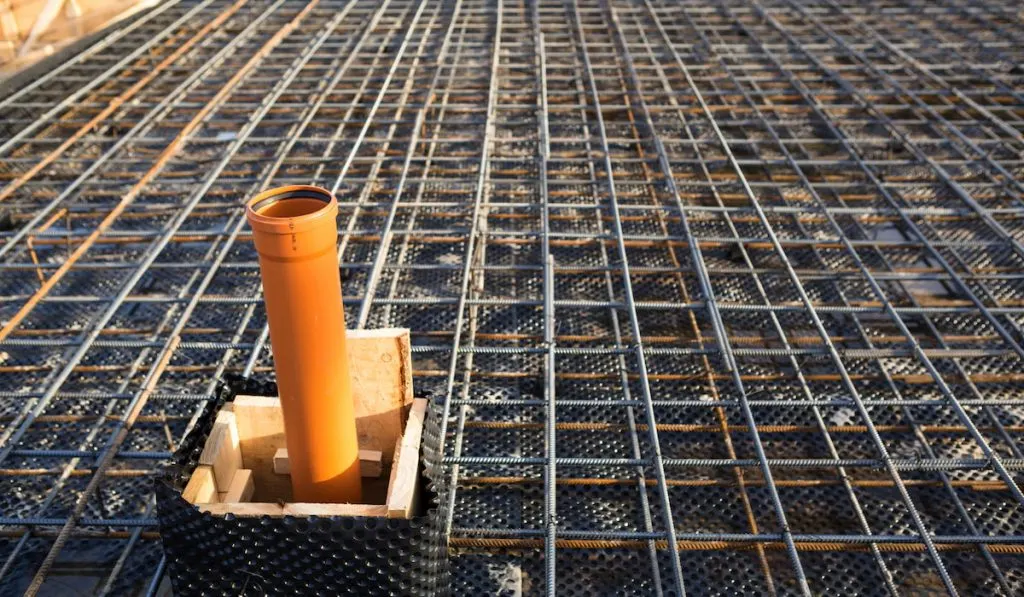
Basically, the type of foundation you use for your home will have a large say on whether or not you’ll be looking for a new home quicker than you would like.
There are three main types of foundations commonly used in construction of homes, and some other types which can also be used by contractors.
The type of foundation used by contractors varies from place to place. The foundation type is dependent on the climate, land type, building type and the groundwater level in your place.
When you see any kind of building, the foundation type will most likely be either crawlspace foundation, basement foundation or slab foundation. However, there are other types of foundations, though more uncommon.
There are various types of foundations used in buildings as stated above. Each of them has their ups and downs, Pros and cons, advantages and disadvantages, which will be discussed extensively below, to make your decision process easier.
Remember to consult your building contractor to find which of them works best for the type of house you want to build and the area of your choice.
Here are the five most common types of house foundations.
1. Crawlspace Foundation
This is a basement like structure which is laid in concrete. It is usually very small, with barely enough space to crawl, hence its name.
Crawlspace foundations are mostly built on land with moist soil sand instead of hilly areas, as the soil sand makes digging easier and the house is elevated from the ground.
It is common in areas with warm and dry climates such as Texas, California, Northwest etc. The ground is dug to about 2-4 feet, a concrete perimeter is erected and concrete pillars are strategically placed to support the house.
A crawlspace foundation gives little or no room for storage as the space is fully enclosed. They can however be used to keep plumbing pipes and other types of utilities.
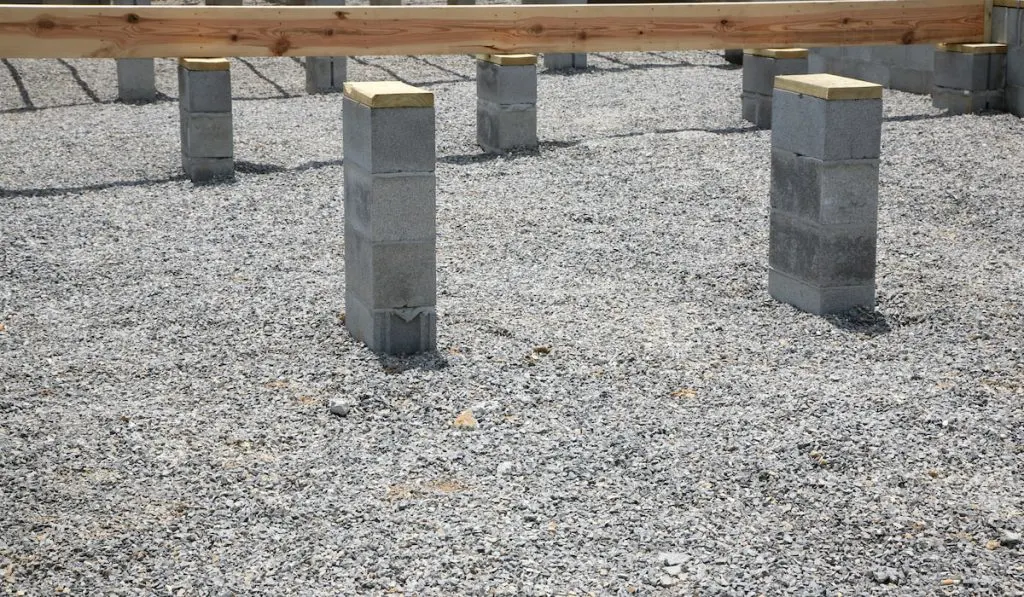
It is not advisable to use the crawlspace to store things, as the moisture from damp ground can enter into the space and ruin your property.
Due to the constant exposure to moisture, crawlspaces can serve as a housing ground for mold and bacteria, which will in turn damage parts of the house like walls, wood floors, and even some type of insulation.
However, this can be prevented by properly sealing and ventilating the crawl space during construction.
Pros
- It has been proven to be very durable, especially in areas with high ground water levels.
- The structure of the crawlspace foundation allows ventilation under the house which is very helpful during the summer as it helps the house remain cool.
- The house is protected during floods when flood vents are added to the crawlspace.
- It can be used as storage for some items.
- When repair is required, it is a way to access wiring and plumbing.
- It is affordable.
Cons
- A blessing in the summer is not one in the winter as the air spaces under the house makes it very cold in the winter.
- The moisture from the ground encourages the growth of mold and bacteria which can lead to infestation.
- IIf the foundation cracks, the integrity of the whole house is weakened.
2. Basement Foundation.
Most houses have basements, especially in the United States, though people don’t really know it’s a type of foundation.
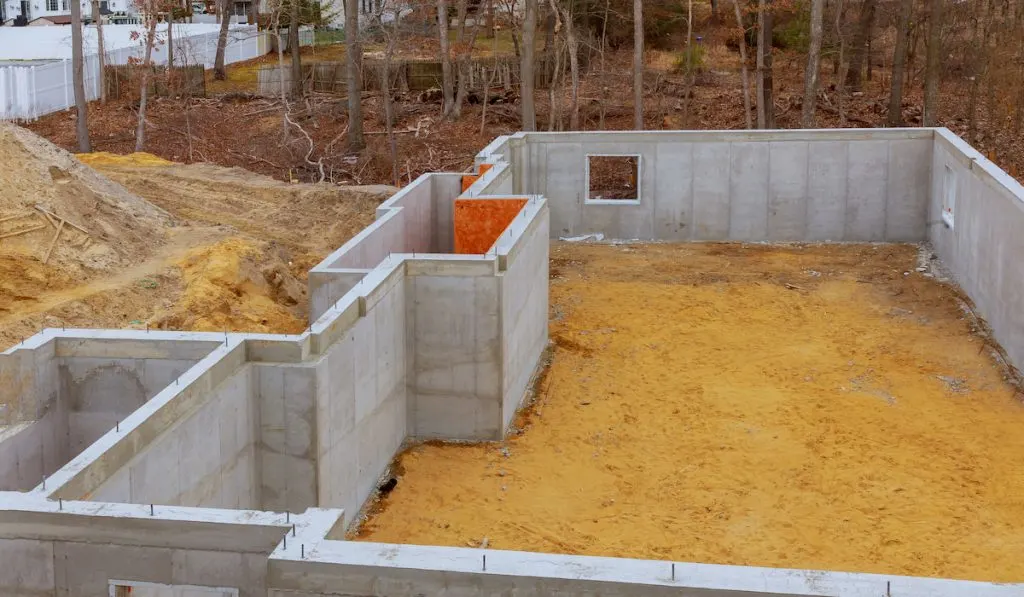
Basement foundations are often used in cold places like the Mid-Atlantic and Northeast region, as the foundation must be placed below the frost line in the ground. This helps to prevent the home from shifting during blizzards or freeze cycles.
A Basement foundation is made by digging a hole in the ground, usually 6 to 8 feet deep. Then, concrete is poured to make a structure below the ground.
This structure forms the load bearing part of the building. Basements are built large enough that an adult can stand in it, and thus, can be used for the extra living space.
Basement types include finished or unfinished, partial or full. A finished basement is one built for the purpose of habitation as it has drywals, finished flooring, ceilings, and other amenities that are similar to what is found in the main home, while an unfinished basement lacks the things that makes it comfortable to live in.
A full basement is one which all its parts are big enough to stand in, while in a partial basement, only a part of it can be stood in and the other part may be big enough to only crawl in.
Basement foundations are the most expensive types of foundations, but they make great storage spaces, or an extra living space. It can also contain your plumbing, wiring systems, and water heater.
Pros
- A finished basement can double the living space in the house.
- It can increase the value and worth of the home.
- They are known to be very energy efficient.
- The air space below the house helps in cooling of the house during summer.
- The extra space is great for storing properties like furniture, utilities etc
- The basement space is most likely to be lived in and maintained, infestation by organisms is reduced drastically.
- It allows easy access to wirings and plumbing during repairs.
Cons
- It is quite expensive to put in place
- If it is abandoned and not maintained, it becomes a large place of mould infestation.
- Basement foundation cannot be built on all soil types.
- It is prone to flooding which can damage the house itself. But, this can be avoided with the installation of a sump pump.
3. Concrete Slab Foundation
This is relatively the easiest foundation type to build and they are not overly expensive.
Concrete slab foundations are made by pouring 2 feet concrete footers on leveled pieces of ground. Then, two layers of concrete blocks are arranged over the footer, followed by rock fillers and internal pipes, and finally, concrete is poured over the top.
The concrete poured is usually 4-6 inches thick. Steel rods are added to increase the strength of the footing.
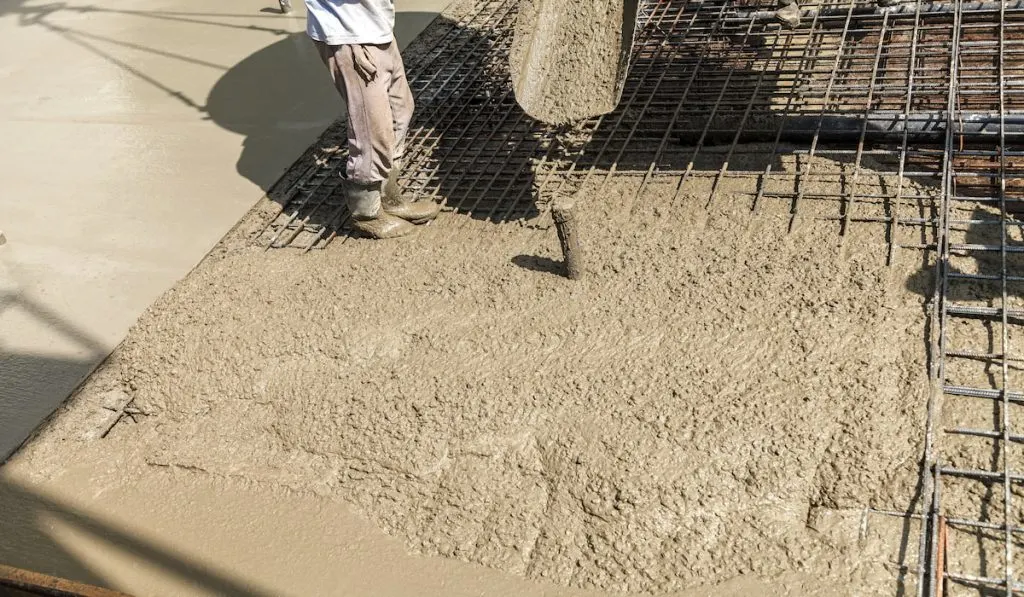
This type of foundation is not suited for cold climates, as the slab may shift out of place if freezing occurs in the ground.
They are best suited for hot and warm climates. They are also used in wet regions like Florida. In concrete slab, there are no extra spaces beneath the house as everything is covered up with concrete.
This makes it a very solid foundation type, as there is no danger of spaces caving in, or danger of mold or vermin infestation.
However, drainage and plumbing systems will have to be installed before the slab is covered and thus, any repairs will involve removal of the slabs.
Pros
- They are less expensive to construct when compared to other foundation types.
- They are quicker to construct.
- The absence of air spaces prevents mold infestation.
- Perfects for warm climates.
Cons
- Carrying out repairs may be very challenging, as handymen will have to break through the slabs to access plumbing and drainage systems.
- The lack of air spaces makes the houses really hot in the summer.
- There is little or no protection from floods, storms or earthquakes as the house is not elevated from the ground.
- A crack in the slab can be costly to repair.
4. Wood Foundation
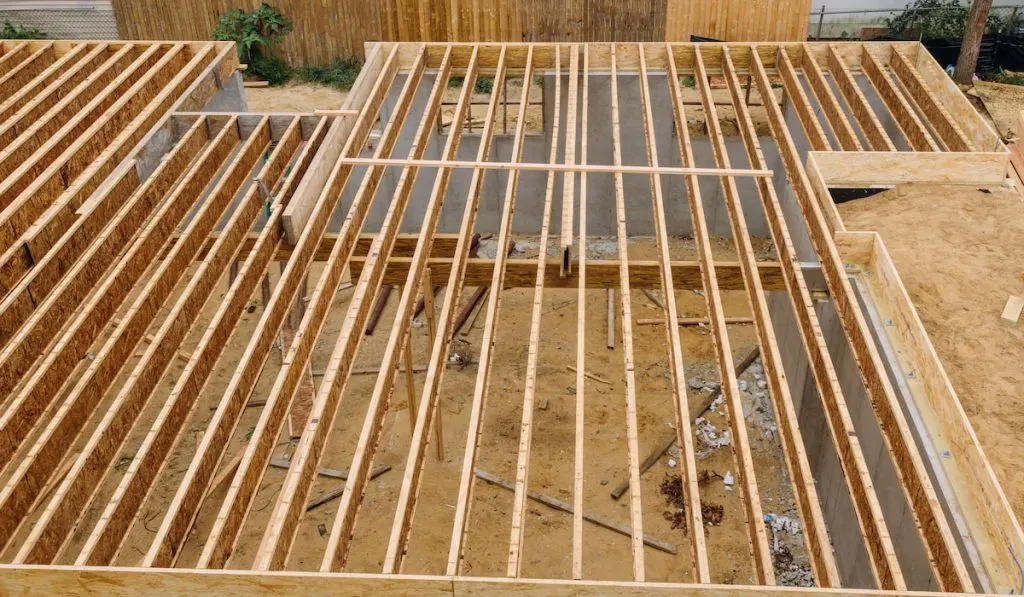
Wood foundations might sound a little strange, but they have been used for house foundations for a long time, especially in remote areas.
Wood is very common and easy to transport. They are also less labor intensive as they do not require concrete pouring and setting, which makes it an even cheaper type of foundation.
The wood used is treated and preserved, making it resistant to rot and decay. If the house has to be taken down, the wood can be recycled for other purposes.
Pros
- They are less labor intensive when compared to other types of foundations.
- Wood is relatively easy to come by and also easy to transport, thus making it cheaper to construct.
- It is a great choice for building houses in remote areas
- Wood can be treated to prevent infestation of termites, rot and decay.
Cons
- Untreated wood will rot and cause the foundation and eventually the whole house to crumble.
- Wood foundations will not stand against severe weather conditions.
- Wood is prone to termite infestation.
5. Piers and Beam Foundation
This is very common in coastal areas. Areas where the ground soil is unstable and constantly shifting, areas that are prone to hurricanes and severe flooding.
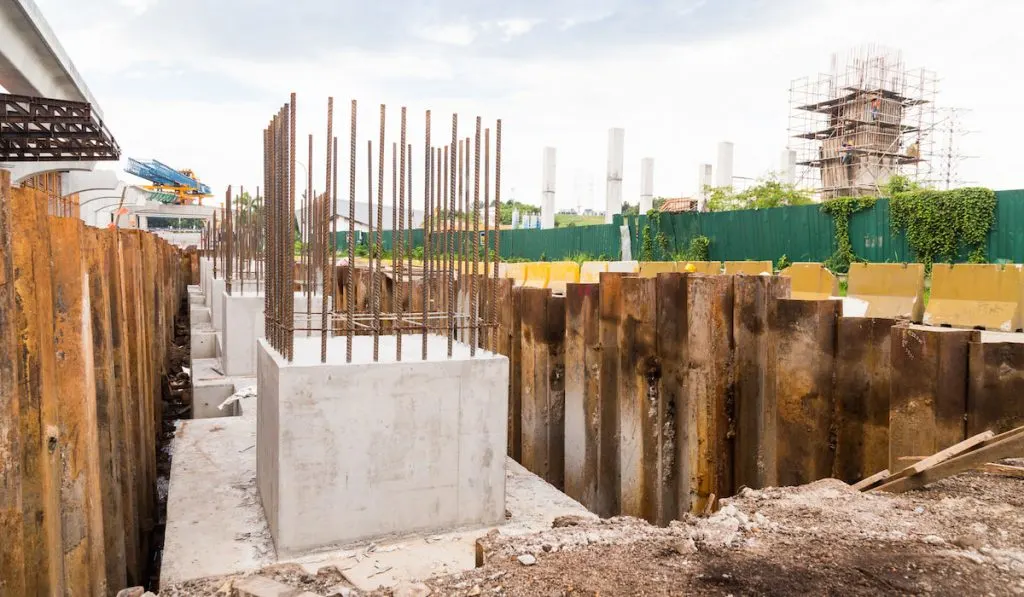
Long pillars of over 15 yards are fixed to the deepest part of the soil and stone to support load bearing beams.
A crawlspace is created beneath the beams where plumbing and wiring are placed.
It is a common choice for constructing large houses, as the pillars distribute the weight of the house evenly over a large area. This prevents the house from sinking over time.
This type of foundation requires very serious planning and has to be done with a structural engineer present to carry out soil analysis, to determine the right conditions to build the foundation.
Heavy equipment is also required in the construction of this foundation.
Pros
- They can support large homes and buildings.
- They protect the homes from flooding and hurricanes.
- The crawlspace below the beam can be used as storage for utilities
Cons
- They are quite expensive to build and they require serious planning.
- If the space underneath is not insulated properly, it can give room for infestation.
What is the Best Foundation Type?
From the types discussed above, you will find that there is ‘no one size fits all’ when it comes to choosing foundation types.
The best foundation in a hot climate, will not fare well in cold and freezing climates. Thus, the best foundation type for you depends on the location and some other factors.
These are various types of foundations that you should consider when constructing your home.
The choice of foundation you choose should depend on your location, type of building, your budget, the type of soil in the area and the weather condition.
It is important you liaise with your contractor and structural engineer when making a choice of foundation.
Resources
- https://www.mtcopeland.com/blog/5-types-of-house-foundations/
- https://www.epichomeideas.com/different-types-house-foundations/
- https://www.archinomy.com/case-studies/the-pros-and-cons-of-different-types-of-house-foundations/
- https://www.squareone.ca/resource-centres/home-improvement/learning-about-house-foundation-types
